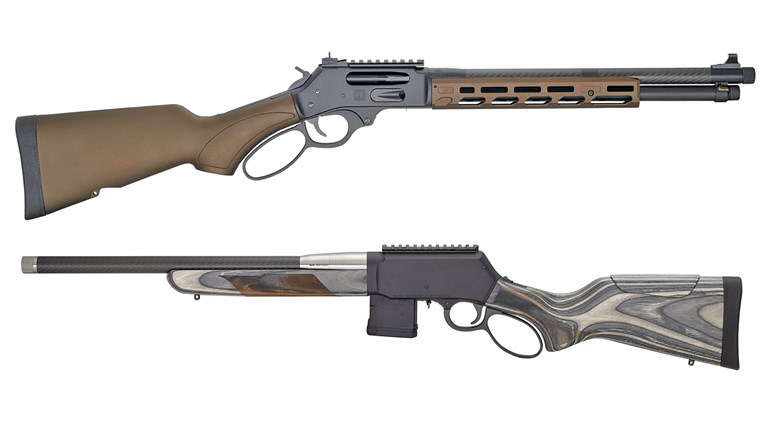
It didn't take the SpeedBead long to gain a sterling reputation at the clays range and upland fields. The red-dot reflex sight's .82-inch by .59-inch sight window is generous enough to ensure you never lose those fast left-to-right crossers and it's a decided advantage when you bust that unexpected covey. Even if you don't swing fast enough, it allows you to keep both eyes open—a decided advantage both in safety and when trying to catch up to a target.
The SpeedBead is currently available and installs easily on many of today's most popular sporting shotguns—select Benelli, Beretta, Franchi, Remington and Stoeger models, to be precise. What piqued my interest is the fact that a Picatinny/Weaver mounting plate is also available for installation on carbines, tactical shotguns and even some handguns. Among those special handgun mounts available are models for a standard 1911, Beretta 92 and PX4 Storm, Taurus PT99, all Glocks, Sig Sauer P226, Springfield XD and Ruger Mark I, II and III.
Can a device originally marketed for hunting and the clays games actually perform reliably in a tactical role? If so, shotguns routinely dispatched to the safe after a range session suddenly become a viable self-defense option.
Installation on a Benelli Super Black Eagle II was quick and easy. In essence, you remove the recoil pad, take off the stock, place the SpeedBead behind the receiver, replace the stock and tighten. I've omitted a few steps involving the spacer and 1⁄8-inch and 1⁄4-inch risers provided with the sight, but if you can remove your shotgun's stock you can install this sight.
Because I was being overcautious the roll pins were the only problem. The pins index to the same holes as the original spacer to hold the sight securely in place under recoil, but they are slightly oversized. I didn't want to break the mount, but once I tightened the nut that holds the stock they compressed tightly into the receiver. Installed properly, this system doesn't move at all. In fact, removing the roll pins was quite a challenge, so I believe the company's claim that it can resist 1,000 Gs or recoil.
Once the mount is installed, you can experiment to determine which riser provides proper cheek weld. I went with the 1⁄4-inch version.
Windage and elevation adjustments on the optic are a snap, thanks to a handy, screwdriver-looking tool and calibration disc provided with the kit. Once dialed in, locking screws are tightened to hold things securely in place. Zero never migrated under testing, despite the slugs and 00 buckshot I lumbered downrange. Three degrees of windage and elevation adjustment are available on the SpeedBead, which translates to roughly 190 inches at 100 yards.
The sight has a slight magnification, 1.07X, which makes using the system with both eyes open natural. In a tactical situation having full peripheral vision is critical in identifying cover and keeping an eye on what will undoubtedly be a very fluid situation.
Power is supplied by a three-volt lithium battery (CR-2032) and it's easily replaced by removing the sight from the riser. The on-off switch, which is located on the left side of the unit is probably the unit's only Achilles heel in regard to tactical use. It's small, very small. While the design is obviously an effort to minimize the chances of inadvertent battery drain, with gloves on or under the stress of a confrontation it's going to be a challenge to operate.
Luckily, even with the SpeedBead installed, you can still use the shotgun's original sights. In fact, when I was shooting from a darkened position to a well-lit target the advantage was glaring. As I raised the shotgun, the front-sight's silhouette became the dominant feature in the sight picture. With a few shots hitting the mark was faster with iron sights than when trying to center the red dot.
In all other lighting conditions the opposite was true—the red dot seemed to find the target naturally. Of note is the fact that the SpeedBead's dot isn't as overpowering as many of the others on the market today. It seems almost transparent in nature, probably one of the reasons it's proven so popular with competitive shooters.
The sight adds a little bulk to a shotgun—a real concern when it comes to tactical use—but not much. It measures only 1.8x1x.9 inches and weighs only .9 ounce. The manufacturer's suggested retail is $383, but you can usually find it for quite a bit less.
Burris has a real winner with the SpeedBead. Not only is it a viable alternative for tactical use, it's a proven performer afield. In today's tightening economy, why not gear up for self-defense and still enjoy the clay games or chasing coveys without having to drain the bank account?






































